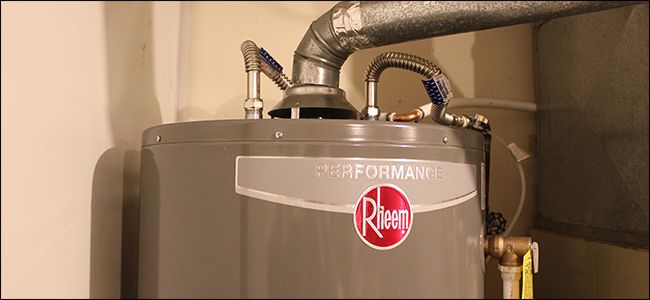Professional Advice on Caring for Your Home's Hot Water System
Professional Advice on Caring for Your Home's Hot Water System
Blog Article
This article down the page about How to Maintain a Hot Water Heater in a Few Simple Steps is truly interesting. Try it and draw your own final thoughts.

Hot water is essential for day-to-day comfort, whether it's for a revitalizing shower or cleaning recipes. To guarantee your warm water system runs effectively and lasts much longer, normal upkeep is crucial. This post offers sensible tips and insights on how to preserve your home's warm water system to stay clear of disruptions and costly repair services.
Introduction
Preserving your home's hot water system may appear complicated, but with a few easy actions, you can ensure it operates efficiently for many years ahead. This guide covers every little thing from recognizing your warm water system to do it yourself upkeep tips and recognizing when to call professional help.
Significance of Preserving Your Hot Water System
Normal upkeep not only prolongs the lifespan of your warm water system yet likewise ensures it runs effectively. Ignoring maintenance can bring about reduced efficiency, greater energy bills, and even premature failing of the system.
Indicators Your Hot Water System Requirements Maintenance
Knowing when your warm water system requires attention can prevent significant concerns. Keep an eye out for signs such as irregular water temperature, odd sounds from the heating system, or corroded water.
Recognizing Your Warm Water System
Before diving right into maintenance tasks, it's useful to comprehend the basic elements of your warm water system. Commonly, this includes the hot water heater itself, pipes, anode rods, and temperature level controls.
Monthly Maintenance Tasks
Routine monthly checks can assist catch minor concerns before they intensify.
Flushing the Hot Water Heater
Flushing your water heater eliminates debris build-up, improving effectiveness and lengthening its life.
Monitoring and Changing Anode Rods
Anode poles prevent deterioration inside the tank. Evaluating and replacing them when broken is important.
Evaluating and Adjusting Temperature Level Settings
Readjusting the temperature level setups guarantees optimum performance and safety.
DIY Tips for Upkeep
You can execute a number of maintenance tasks yourself to maintain your warm water system in top condition.
Checking for Leakages
On a regular basis evaluate pipes and connections for leakages, as these can cause water damages and higher costs.
Examining Pressure Alleviation Valves
Checking the stress relief valve ensures it works correctly and prevents too much stress build-up.
Protecting Pipelines
Protecting warm water pipelines minimizes heat loss and can conserve energy.
When to Call a Specialist
While do it yourself maintenance is helpful, some problems call for specialist experience.
Facility Problems Needing Expert Assistance
Instances consist of significant leakages, electrical troubles, or if your hot water heater is regularly underperforming.
Regular Professional Upkeep Perks
Professional upkeep can include extensive evaluations, tune-ups, and ensuring conformity with security standards.
Verdict
Routine upkeep of your home's warm water system is crucial for performance, longevity, and price financial savings. By following these tips and recognizing when to seek expert assistance, you can ensure a dependable supply of warm water without unforeseen disturbances.
How to Maintain an Instant Hot Water Heater
Before tinkering with your hot water heater, make sure that it’s not powered on. You also have to turn off the main circuit breaker and shut off the main gas line to prevent accidents. Also turn off the water valves connected to your unit to prevent water from flowing into and out of the appliance. 2. When you’re done, you have to detach the purge valves’ caps. These look like the letter “T†and are situated on either side of the water valves. Doing so will release any pressure that has accumulated inside the valves while at the same time avoid hot water from shooting out and burning your skin. 3. When the purge valves’ caps are removed, you have to connect your hosing lines to the valves. Your unit should have come with three hoses but if it didn’t, you can purchase these things from any hardware or home repair shops. You can also get them from retail stores that sell water heating systems. Read the user’s manual and follow it to complete this task properly. When the hosing lines are connected, open the purge port’s valves. 4. You should never use harsh chemical cleaners or solutions when cleaning your unit. Make use of white vinegar instead. It should be undiluted and you’ll probably use about 2 gallons. 5. Now flush your water heater. This task should probably take about 40 minutes. We can’t give you specific directions for this because the procedure is carried out depending on the type, model and brand of your heater. With that being said, refer to the user’s manual. 6. When you’re done draining the unit, you have to turn off the purge port valves again. Remove the hosing lines that you earlier installed on each of the water valves. Put the valve caps (purge port) back in their respective places and be very careful so as not to damage the rubber discs that are found inside these caps. 7. Now that everything’s back in place, check your user’s manual again to find out how to reactivate your water heating system. 8. Once it is working, turn one of your hot water faucets on just to let air pass through the heater’s water supply pipes. Leave the tap on until water flows smoothly out of it. https://www.orrplumbing.com/blog/2014/september/how-to-maintain-an-instant-hot-water-heater/

Hopefully you enjoyed our section about How to Maintain a Hot Water Heater in a Few Simple Steps. Thank you for taking a few minutes to read our blog. Sharing is good. Helping others is fun. Thank you for going through it.
Call Today Report this page